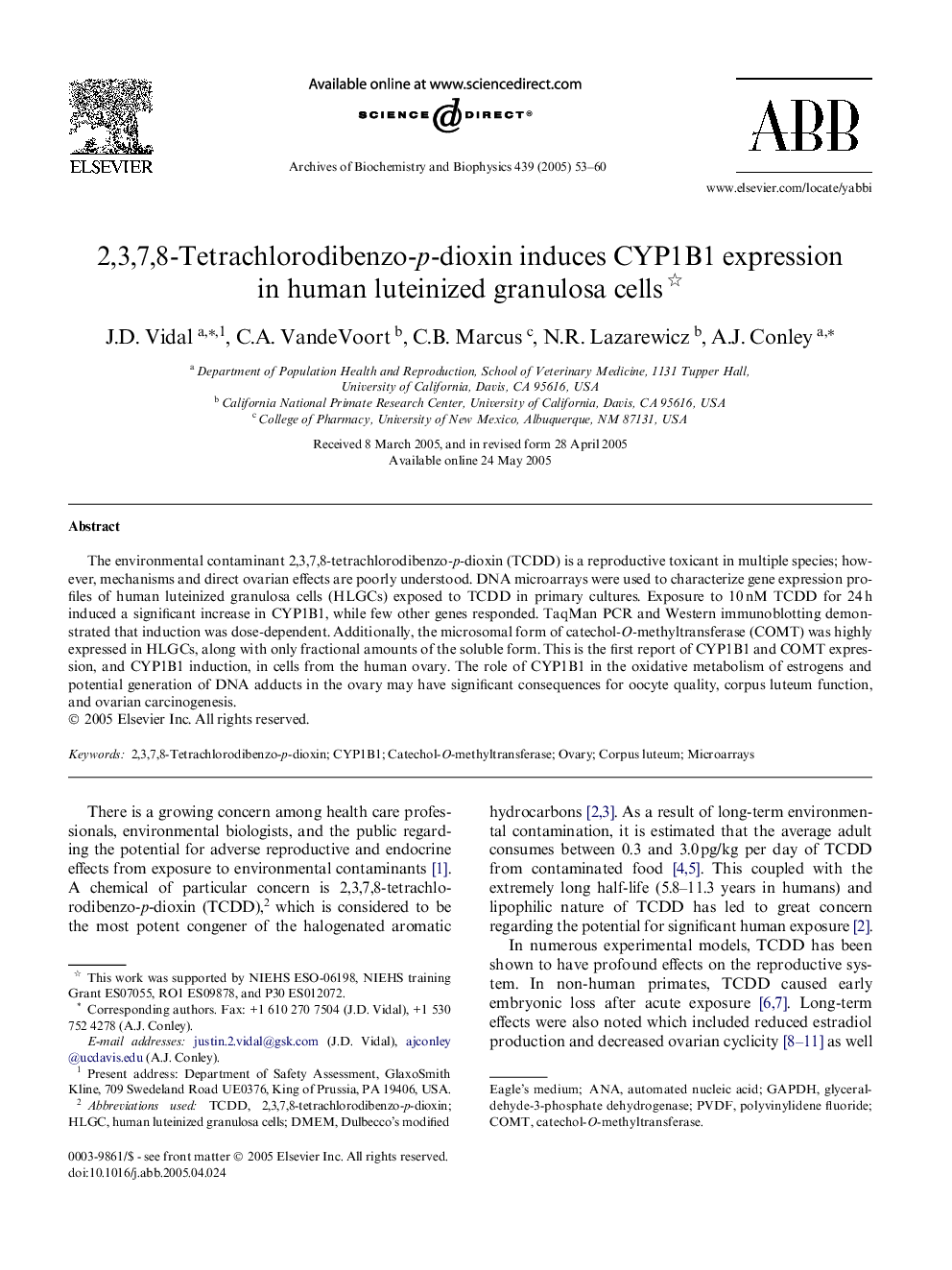| Article ID | Journal | Published Year | Pages | File Type |
|---|---|---|---|---|
| 9882178 | Archives of Biochemistry and Biophysics | 2005 | 8 Pages |
Abstract
The environmental contaminant 2,3,7,8-tetrachlorodibenzo-p-dioxin (TCDD) is a reproductive toxicant in multiple species; however, mechanisms and direct ovarian effects are poorly understood. DNA microarrays were used to characterize gene expression profiles of human luteinized granulosa cells (HLGCs) exposed to TCDD in primary cultures. Exposure to 10Â nM TCDD for 24Â h induced a significant increase in CYP1B1, while few other genes responded. TaqMan PCR and Western immunoblotting demonstrated that induction was dose-dependent. Additionally, the microsomal form of catechol-O-methyltransferase (COMT) was highly expressed in HLGCs, along with only fractional amounts of the soluble form. This is the first report of CYP1B1 and COMT expression, and CYP1B1 induction, in cells from the human ovary. The role of CYP1B1 in the oxidative metabolism of estrogens and potential generation of DNA adducts in the ovary may have significant consequences for oocyte quality, corpus luteum function, and ovarian carcinogenesis.
Keywords
Related Topics
Life Sciences
Biochemistry, Genetics and Molecular Biology
Biochemistry
Authors
J.D. Vidal, C.A. VandeVoort, C.B. Marcus, N.R. Lazarewicz, A.J. Conley,
